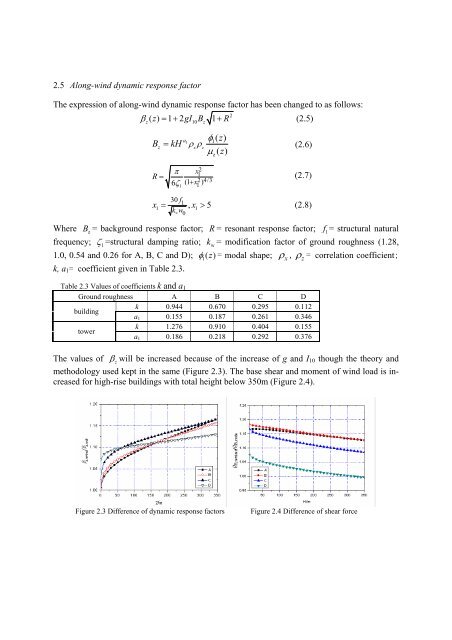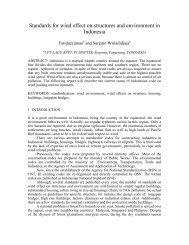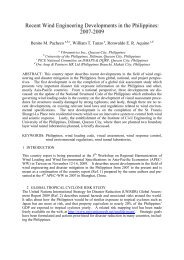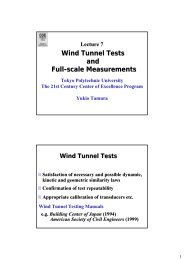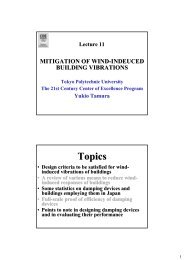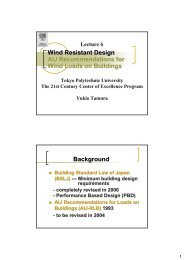Chinese Country Report 2012 - Revision of wind loading code and ...
Chinese Country Report 2012 - Revision of wind loading code and ...
Chinese Country Report 2012 - Revision of wind loading code and ...
Create successful ePaper yourself
Turn your PDF publications into a flip-book with our unique Google optimized e-Paper software.
2.5 Along-<strong>wind</strong> dynamic response factorThe expression <strong>of</strong> along-<strong>wind</strong> dynamic response factor has been changed to as follows:2z( z) 12gI10Bz1 R(2.5)Bz ( z)kH( z)(2.6)a1 1 x zzx21(1 x24/31 1 )R (2.7)630 fx , x 5(2.8)11 1kw w 0Where Bz= background response factor; R = resonant response factor; f 1= structural naturalfrequency; 1=structural damping ratio; k w= modification factor <strong>of</strong> ground roughness (1.28,1.0, 0.54 <strong>and</strong> 0.26 for A, B, C <strong>and</strong> D); ( z)= modal shape; 1 x , z = correlation coefficient;k, a 1 = coefficient given in Table 2.3.Table 2.3 Values <strong>of</strong> coefficients k <strong>and</strong> a 1Ground roughness A B C Dbuildingk 0.944 0.670 0.295 0.112a 1 0.155 0.187 0.261 0.346towerk 1.276 0.910 0.404 0.155a 1 0.186 0.218 0.292 0.376The values <strong>of</strong> zwill be increased because <strong>of</strong> the increase <strong>of</strong> g <strong>and</strong> I 10 though the theory <strong>and</strong>methodology used kept in the same (Figure 2.3). The base shear <strong>and</strong> moment <strong>of</strong> <strong>wind</strong> load is increasedfor high-rise buildings with total height below 350m (Figure 2.4).Figure 2.3 Difference <strong>of</strong> dynamic response factorsFigure 2.4 Difference <strong>of</strong> shear force


